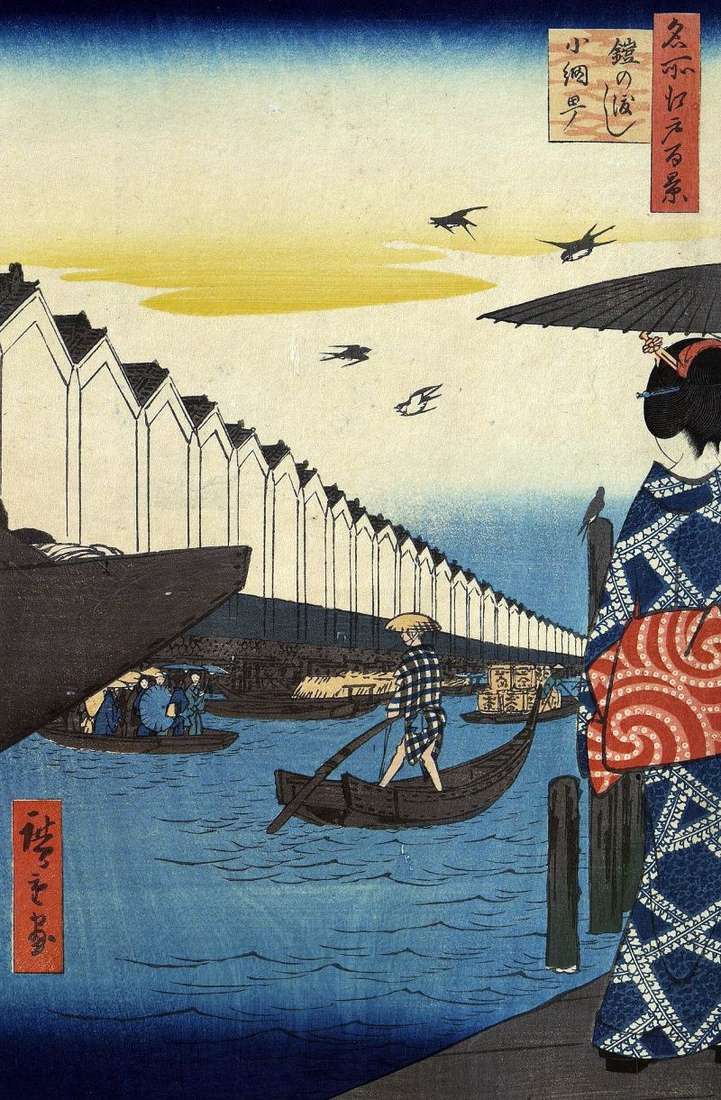
Hiroshige shows a view of the Nihonbasigawa River, which opens from the Kayabate quarter, which means “Miscant warehouses”. Here were shops of merchants who traded a miscant-reed, they were covered with roofs of houses. On the other side in the Qo’mite quarter, there were many warehouses in which a wide variety of goods were stored. At the quays of the Quamet Quarter are vessels waiting for loading.
In the depth of the sheet is visible a boat loaded with boxes of tea. In the left part of the sheet is a ferry crossing the river filled with standing people. On the left, in the foreground is the nose of a large boat. The girl that the viewer sees from the back, apparently, is heading for the crossing. The name of the crossing is connected with the legend about Minamoto Yoshiye, the legendary warrior of the end of the Heian period, which tells about his military campaign against the banks of Osyu.
During the crossing, a storm broke out, the ship began to sink and then Esiye threw his armor into the water to propitiate the dragon, the master of the water element. Some color differences in two variants of the engraving touch, mainly, the color saturation. The exception is the dark blue trail of the boat in the later version, attracting the attention of viewers
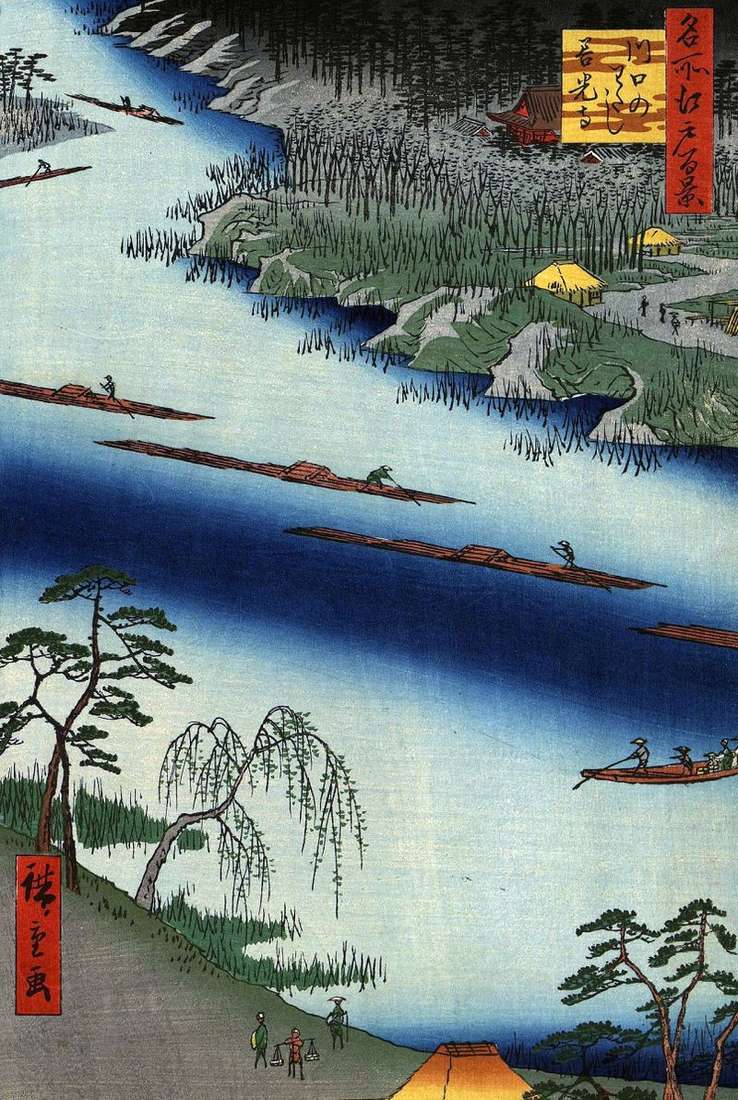 Monastery Zenkoji at the crossing in Kawaguchi no Watasi by Utagawa Hiroshige
Monastery Zenkoji at the crossing in Kawaguchi no Watasi by Utagawa Hiroshige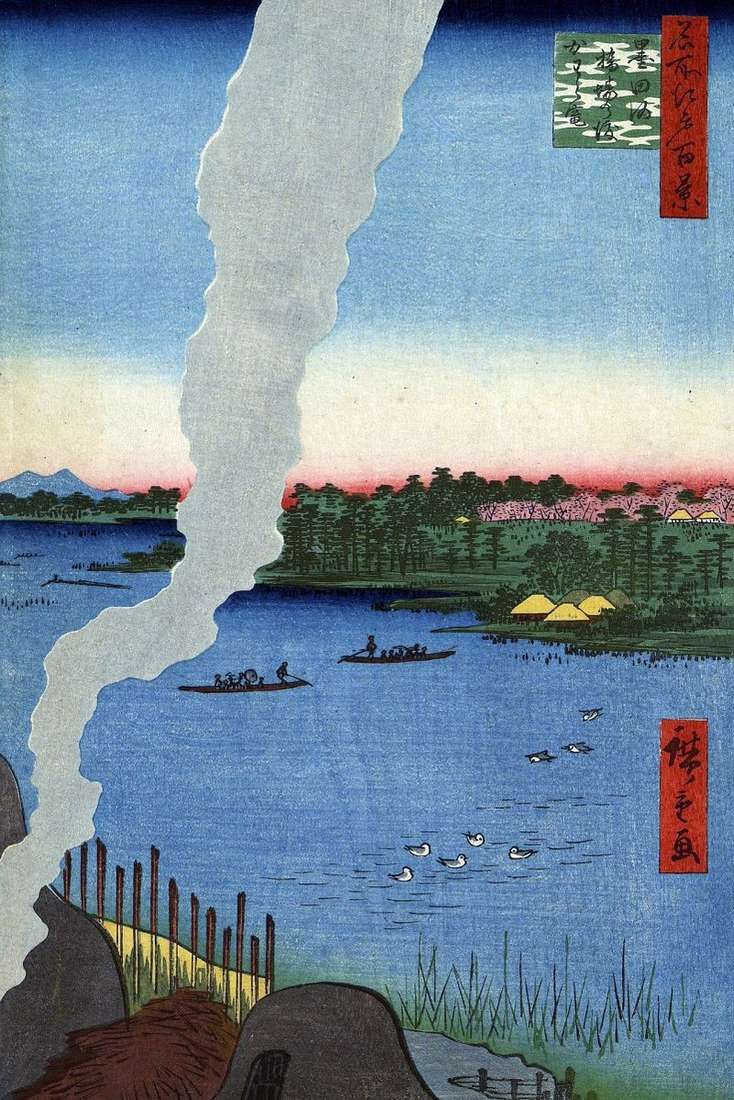 Furnaces for roasting at the crossing of Hasiba no Watasi on the Sumidagawa River by Utagawa Hiroshige
Furnaces for roasting at the crossing of Hasiba no Watasi on the Sumidagawa River by Utagawa Hiroshige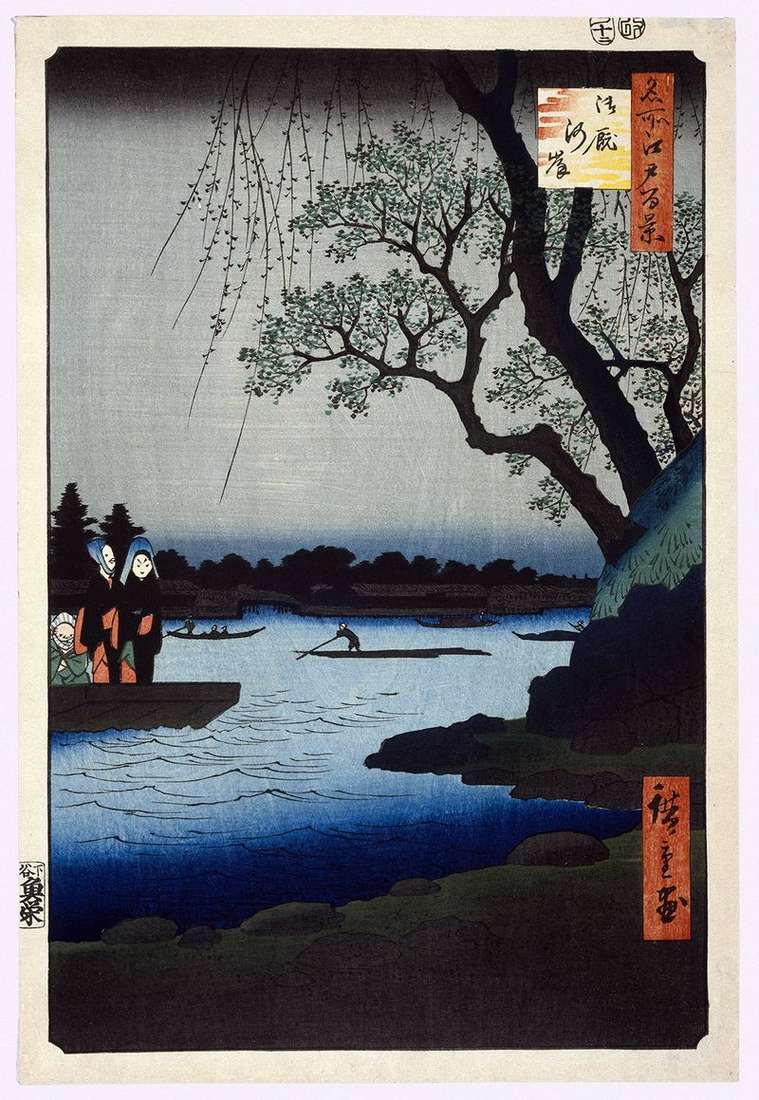 Embankment of Ommayagasi by Utagawa Hiroshige
Embankment of Ommayagasi by Utagawa Hiroshige Crossing Haneda, the sanctuary of Benten by Utagawa Hiroshige
Crossing Haneda, the sanctuary of Benten by Utagawa Hiroshige The Nijutsu crossing by Utagawa Hiroshige
The Nijutsu crossing by Utagawa Hiroshige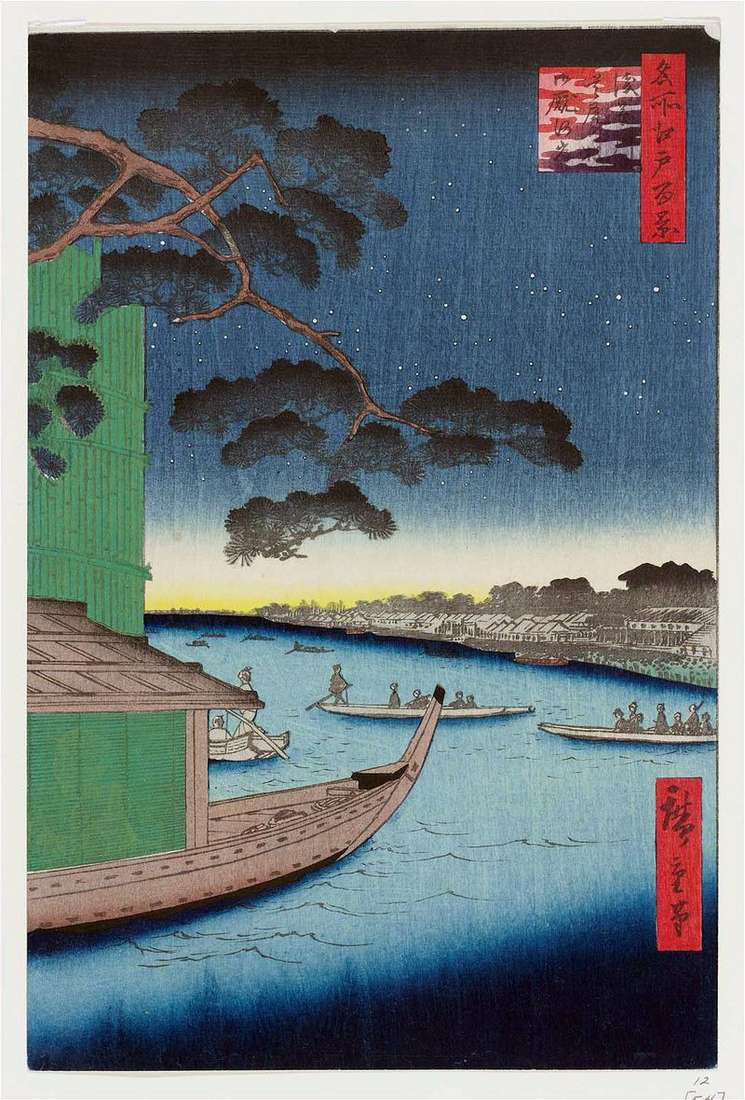 Pine Suube no matzo on the Asakusagawa River, the Ommayagashi Embankment by Utagawa Hiroshige
Pine Suube no matzo on the Asakusagawa River, the Ommayagashi Embankment by Utagawa Hiroshige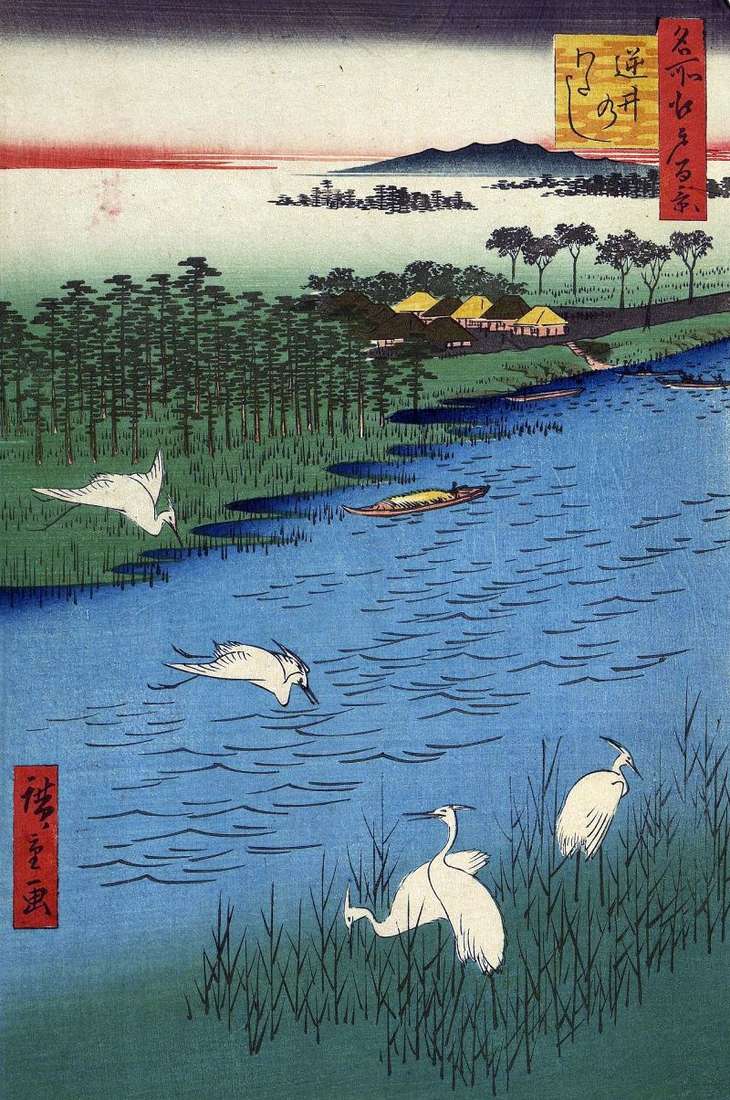 Sakasai crossing by Utagawa Hiroshige
Sakasai crossing by Utagawa Hiroshige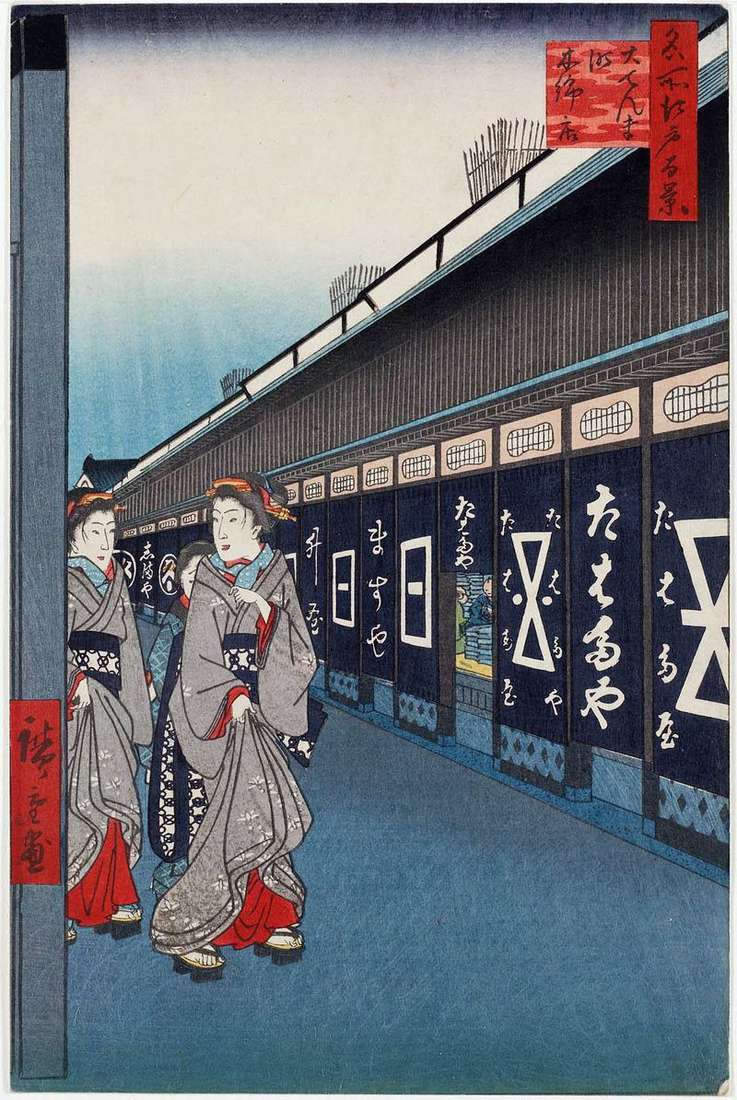 The street of manufactory stores in the Odemmata by Utagawa Hiroshige
The street of manufactory stores in the Odemmata by Utagawa Hiroshige